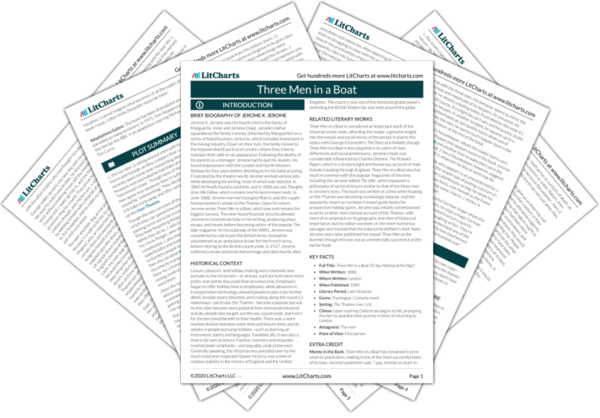Next
Summary
Three Men in a Boat Study Guide |
Next
Summary
|
Welcome to the LitCharts study guide on Jerome K. Jerome's Three Men in a Boat. Created by the original team behind SparkNotes, LitCharts are the world's best literature guides.

Money in the Bank. Three Men in a Boat has remained in print since its publication, making it one of the most successful texts of its time. Jerome’s publisher said, “I pay Jerome so much in royalties. I cannot imagine what becomes of all the copies of the book I issue. I often think the public must eat them.”
Adaptations Galore. The book has been dramatized and parodied on many occasions. In 1975, Tom Stoppard adopted the text for the BBC in an adaptation starring Michael Palin and Tim Curry.